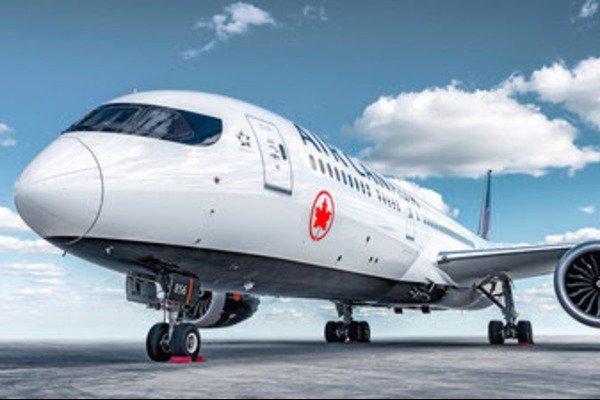In a highly unusual and alarming incident, a passenger onboard an Air Canada flight took a drastic step by jumping off the plane through the cabin door before it was set to take off for Dubai. The incident occurred at Toronto Pearson International Airport on January 8, causing a significant disruption and nearly a six-hour delay in the flight’s departure.
According to reports, the passenger initially boarded the aircraft normally but later opened the cabin door instead of taking his seat. The individual fell approximately 20 feet to the tarmac, sustaining injuries in the process. Emergency services, including the Peel Regional Police, were promptly called to the scene to attend to the injured passenger and address the situation.
The incident has triggered an investigation by Air Canada, with a spokesperson for the airline confirming that all approved boarding and cabin operating procedures were followed. The nature and extent of the injuries sustained by the passenger remain unknown at this time. It is also unclear whether the disruptive passenger was subsequently arrested for his actions.
The disruptive incident not only posed a threat to the individual involved but also resulted in significant operational challenges for Air Canada. The Boeing 747’s takeoff was delayed by nearly six hours as airline staff attended to the injured passenger, conducted necessary investigations, and addressed the aftermath of the incident.
A spokesperson for Air Canada, speaking to Global News, provided assurance that an investigation into the incident is actively underway. The airline is working in collaboration with relevant authorities to understand the circumstances surrounding the passenger’s actions. The Greater Toronto Airports Authority has also acknowledged the incident, stating that they worked with the airline, Peel Regional Police, and Peel EMS to provide support and determine immediate needs.
This incident comes on the heels of another peculiar case involving an Air Canada flight, where a 16-year-old passenger reportedly attacked a family member. The incident occurred on Air Canada Flight 137 en route from Toronto to Calgary. According to the Royal Canadian Mounted Police, the Winnipeg Richardson International Airport was notified of an aircraft diversion to Winnipeg due to “an unruly passenger on board who had assaulted a passenger.”
The 16-year-old passenger was restrained by fellow travellers and airline staff. The family member who was assaulted received treatment for minor physical injuries during the flight. The teenager was subsequently detained and transferred to the hospital for a medical examination. The motive behind the attack remains unclear.
These incidents underscore the challenges airlines face in managing disruptive behavior and ensuring the safety and well-being of passengers and crew. While rare, such occurrences necessitate thorough investigations and, in some cases, diversions or delays, impacting the overall travel experience for passengers.
As the investigations unfold, Air Canada and other airlines will likely assess their protocols and procedures to enhance security measures and address potential vulnerabilities in the boarding and in-flight environments. Passengers and crew alike depend on the vigilance of airline staff and the collaboration of law enforcement to maintain a secure and orderly travel experience. The incidents also highlight the need for continued efforts to raise awareness about appropriate conduct and the consequences of disruptive behavior during flights.
